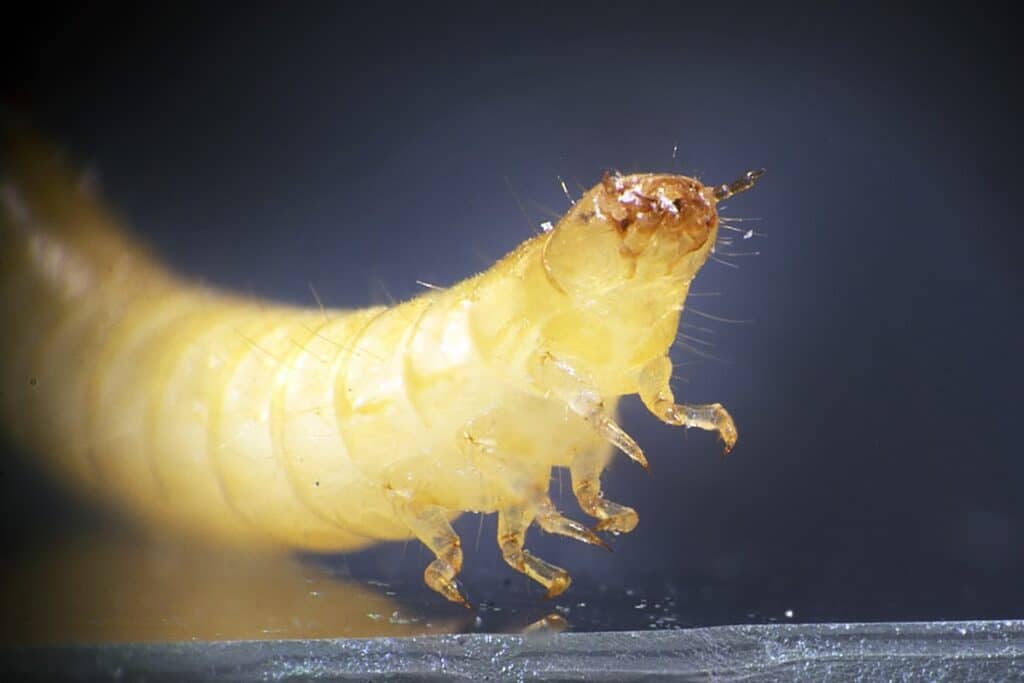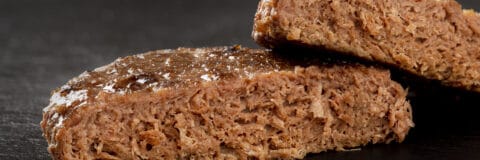
Researchers have uncovered the surprising mechanics behind the wriggle of the red flour beetle in newly published findings that could help to combat infestation and tackle threats to global food security.
It is estimated that 20% of the developing world’s stockpiles of flour and grain are infested and spoiled each year by he actions of the red flour beetle and pests like it, along with 9% of stocks in the rest of the world.
However, until now it was not known how or why these beetles were so effective in burrowing.
In a research first, the fascinating new findings from the University of St Andrews, in Scotland, could not only change the way pest infestations are tackled in future, but also inspire fresh ideas in robotics.
Wave-like walking pattern
The breakthrough study, published academically in the Journal of Experimental Biology, was spearheaded by a fourth-year undergraduate Bella Xu Ying at the University, working alongside Dr Maarten Zwart and Dr Stefan Pulver in the School of Psychology and Neuroscience.
The team discovered that the larvae of the red flour beetle (Tribolium castaneum) perform best on rough, fibrous surfaces like paper and cardboard. On these substrates, they use a wave-like walking pattern that starts at the back and moves forward, providing both efficiency and flexibility.
However, the research also learned that when the larvae encounter more demanding conditions, such as steep slopes or the need to tunnel into flour, a key food source, they switch tactics by deploying tiny structures called pygopods at the rear of their bodies to grip and stabilise themselves.
Tail vital to climb and tunnel
Further experiments showed that disrupting the neural connections between the larvae’s front and back body sections severely hampers their ability to climb and tunnel.
This finding highlights the critical role of posterior abdominal structures in adapting their movements to environmental challenges and shows that they need their tail to infest food stores.
The breadth of remit for the research was important to its success, says first author Bella Xu Ying said:
“It’s not often you’re given a blank slate and told: ‘no one knows how this thing moves, go and find out!’ This gave us a lot of freedom in the questions we could ask, to both fulfil our curiosities as motor systems neuroscientists but also uncover foundational results that could inform new practices in sustainable agriculture.
“In the future, we would love to find out what types of neurons and molecules connect their brains, legs and pygopods, to help develop more specific methods that inhibit their infestation without damaging the crops themselves.”
The learnings could benefit not only the food sector but also robotics, explains Dr Zwart:
“It has been exciting to delve into the world of red flour beetle larvae and uncover the elegant ways they adapt their movements to tough, ever-changing environments. Our work not only reveals a remarkable neural and biomechanical strategy but also hints at exciting new approaches to enhance food security and design agile bio-inspired robots.”
Interdisciplinary insights and impacts
The work was funded by the Institute for Behavioural and Neural Sciences (IBANS), an interdisciplinary community of researchers at St Andrews who collectively study the behaviour of human beings and other animals from cellular, neural, cognitive and evolutionary perspectives.
The support of an organisation like IBANS helps realise multiple research benefits, concludes Dr Pulver:
“This is a great example of how student-led interdisciplinary research at St Andrews can generate insights and impacts that reach beyond Scotland.”
This pioneering work shows that even small insects employ sophisticated locomotor strategies to overcome challenging environments. With stored grain losses due to pests like the red flour beetle estimated around one fifth worldwide, understanding these capabilities offers exciting development potential in many fields.
Further Reading:
- More about the study and its findings, as published in the Journal of Experimental Biology;
- More on research at the University of St Andrews; and its School of Psychology and Neuroscience;
- More about Institute for Behavioural and Neural Sciences (IBANS);
- Also on SustMeme, Data at heart of collaboration on climate change (in AFOLU);
- Also on SustMeme, 9 out of 10 countries fail on food waste emissions;
- Also on SustMeme, Conservation boost for endangered Tansy Beetle;
- Also on SustMeme, Pilot plant for sustainable protein from microbes;
- Also on SustMeme, Are pea, canola and oat the future for plant protein?
Check out the full archive of stories under the SustMeme Biodiversity & Conservation Channel, now available to Sponsor.






